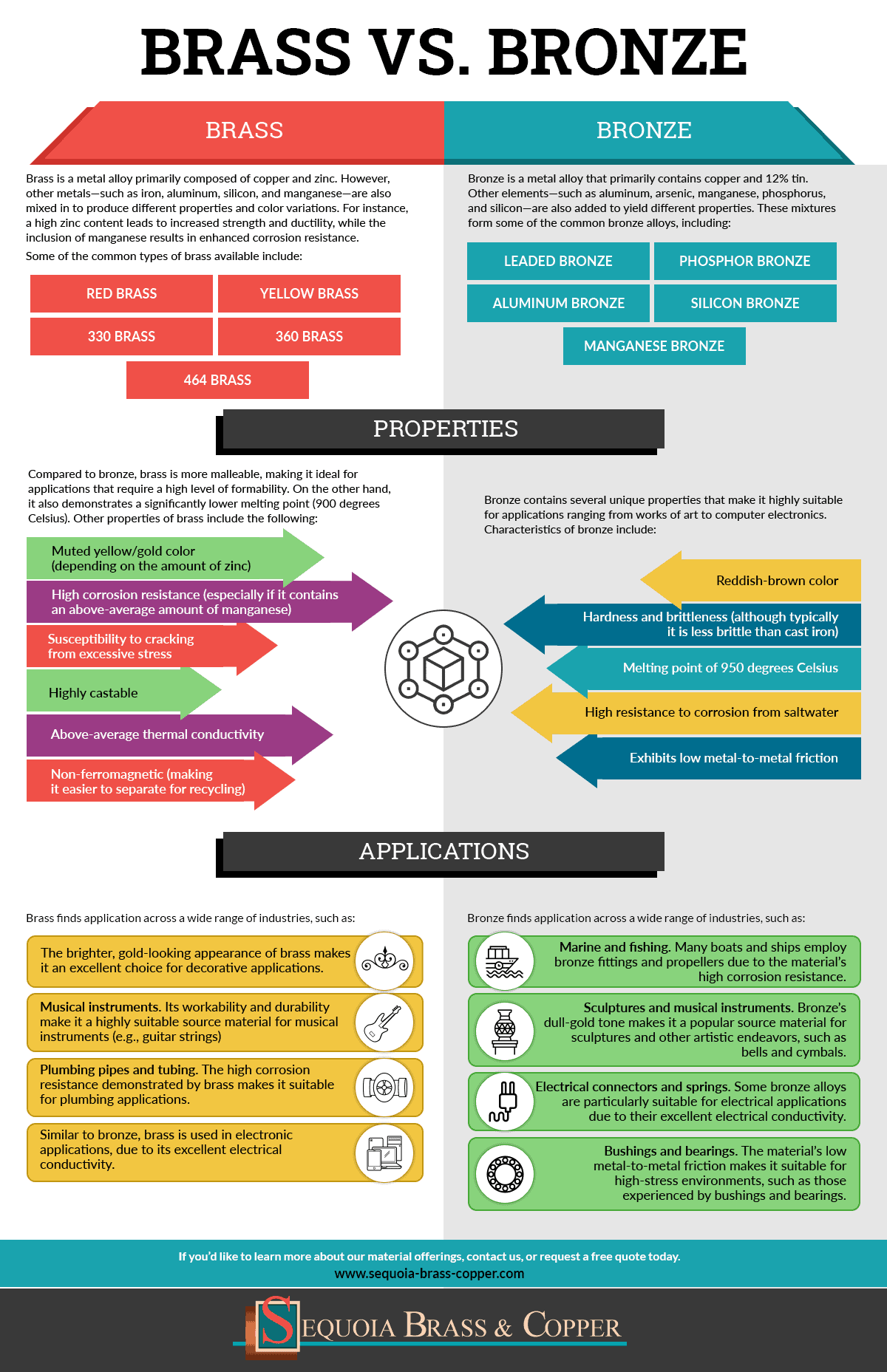Key Properties of Oxygen Free Copper
Leave a CommentOxygen-free copper is a type of copper that is combined with carbon and carbonaceous gasses. It is made by melting copper and mixing it with the carbon content and gasses in an electrolytic copper refining process. Subsequently, most of the oxygen contained in the copper is removed, ultimately forming a compound made with a minimum purity of 99.99% copper and oxygen content of less than or equal to 0.0005%.
This pure copper content makes it more durable, thermally and electrically conductive. These and other enhanced properties make oxygen-free copper a popular choice for many applications across a wide range of industries.
Properties of Oxygen-Free Copper
The properties of oxygen-free copper include:
Increased Tensile Strength, Elongation, and Hardness
One of the key properties that make this material popular is its improved tensile strength of 222-385 N/mm2, with a proof strength rate (to 0.1% deformation) of 60-325 N/mm2. This material is also capable of elongation of 60-4% and features a hardness range of 45-115 HV.
High Conductivity
When it comes to conductivity, oxygen-free copper features an average conductivity of 102% along with a guaranteed value of 101% as per IACS. Thermal conductivity also ranges from 386 to 394 W/m°C.
Improved Corrosion and Softening Resistance
Unlike standard copper, oxygen-free copper’s higher purity provides increased corrosion resistance. It also exhibits resistance to softening, meaning it can operate successfully at temperatures of up to 105°C for as long as 20 to 25 years. In addition, it has a high melting point of around 1083°C (1981°F).
Higher Density
If you require metal with greater density, oxygen-free copper is also beneficial in this area. This metal boasts a density of 8.89-8.94 g/cm3 or 0.321-0.323 lb/in3.
Optimal Workability
Oxygen-free copper is extremely brazeable, and solderable. C10100 copper is fabricated at temperatures as high as 760 to 871°C (1400 to 1600°F), and it is excellent for both hot and cold working. Annealing of this grade is also performed at temperatures between 371 to 649°C (700 to 1200°F).
Other properties of oxygen-free copper include low volatility under high vacuum, invulnerability to hydrogen embrittlement, and high impact strength.
Grades of Oxygen-Free Copper
For different applications, there are two main grades of oxygen-free copper available, including:
C10100 Oxygen-Free Electronic Copper (Cu-OFE)
With silver removed, C10100 oxygen-free electronic copper contains 99.99% copper, with oxygen reduced to 0.0005%. This grade is made from pure copper cathode, which is poured beneath a protective gas atmosphere. It boasts around 1% higher electrical conductivity compared to C10200 oxygen-free copper, along with superior corrosion resistance. It’s frequently used for high-quality audio and video systems.
C10200 Oxygen-Free Copper (Cu-OF)
This grade contains 99.95% copper and boasts excellent purity. It’s worth noting that no copper is ever 100%.
Applications/Industries Served by Oxygen-Free Copper
Some common industries and applications for oxygen-free copper include, but are not limited to:
- Automotive, industrial, and electrical industries
- Klystrons
- Coaxial Cables
- Wave Guides
- Electrical Conductors
- Microwave Tubes
- Bus Conductors
- Busbars
- Anodes for Vacuum Tubes
- Lead-in Wire
- Tubing
- Transistor Components
- Billet Mold Tube
- Automotive Rectifiers
- Copper for Glass Seals in Electrical Appliances
- High Resistance-Ratio Cryogenic Shunts
- Powder Metallurgy Extrusion Cans
Contact Sequoia Brass & Copper Today
If you’re looking for superior copper materials that exhibit increased strength, durability, workability, and other benefits, consider using oxygen-free copper from Sequoia Brass & Copper. We are a leading supplier of oxygen-free copper as well as other top-grade nonferrous metals. Our experienced professionals will work with you throughout the metal procurement process to make sure you get only the products you need. We regularly monitor, review, and upgrade our Quality Management Systems to maintain consistent quality, ensure the satisfaction of our customers, and meet all statutory and regulatory requirements.
For more information about our oxygen-free copper materials, request a quote or contact us today.




